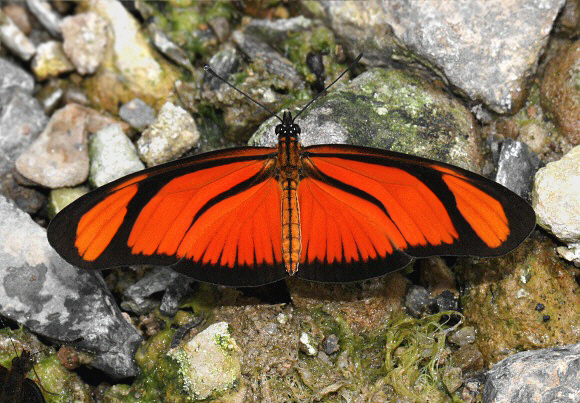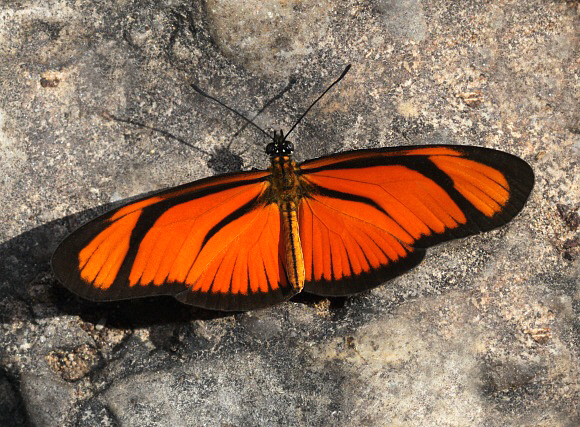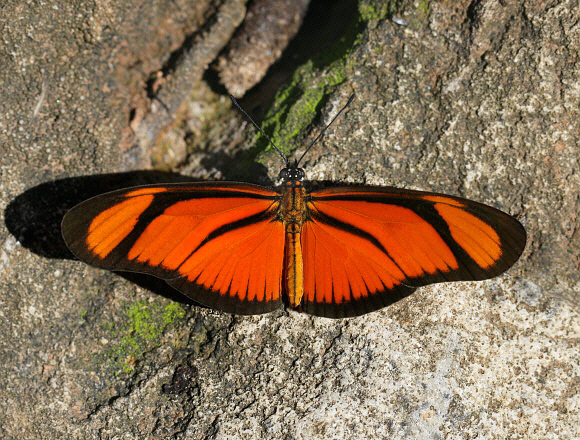 Eueides aliphera, Satipo, Peru – Adrian Hoskins
Eueides aliphera, Satipo, Peru – Adrian Hoskins
Introduction
The tribe Heliconiini, colloquially known as Longwings, includes 71 species, all confined exclusively to the neotropics. The butterflies are characterised by possessing distinctively patterned elongated forewings and a delicate fluttering flight. The Heliconiini includes the genus Heliconius ( 39 species ), together with the smaller genera Dryas, Agraulis, Dryadula, Eueides, Neruda, Laparus, Philaethria, Dione and Podotricha.
The 12 Eueides species are similar to other Heliconiines but smaller in size. Some such as isabella are mimics of tiger-complex Ithomiines, while others including aliphera and lineata are very similar to Dryas and Dione in appearance. A few such as vibilia closely resemble Actinote species. Eueides heliconioides falls into yet another group which strongly resemble Laparus doris.
A major characteristic which helps to distinguish Eueides from similar taxa is the shape and length of the antennae – in Eueides these are never more than half the length of the costa; in Actinote they are about the same length but are very strongly clubbed. In the tiger-complex Ithomiines they are long, tapered, cream in colour and dropping. In Heliconius and Laparus they are about two-thirds the length of the costa, and erect.
Eueides aliphera is distributed from Mexico to Brazil and southern Peru.
 Eueides aliphera, Satipo, Peru – Adrian Hoskins
Eueides aliphera, Satipo, Peru – Adrian Hoskins
Habitats
This species is found in rainforest and cloudforest on both sides of the Andes, at altitudes between 0-1400m.
Lifecycle
The eggs are laid singly on Passiflora. The larvae feed solitarily and are blackish, with long bristled spines along the back and sides. There is a broad yellowish stripe along the sides. The head is black and shiny with a pair of long recurved horns. The chrysalis is greenish-white with black markings on the wing cases, and short black-tipped spines along the back.
Adult behaviour
Both sexes spend most of their time high in the canopy, but males occasionally descend to imbibe moisture from damp sand, boulders or peccary wallows. They only tend to come to the ground when other orange Heliconiines such as Dryas iulia or Dione juno are present. On such occasions there can be dozens of each species swarming over a small patch of damp ground. It is unclear whether these species are simultaneously attracted to a substance on the ground, or whether aliphera are polarising toward other orange species in the same way that mixed species aggregations of white and yellow butterflies commonly gather to feed on river beaches. Females can sometimes be seen nectaring at Lantana, Cissus or Serjania.

Eueides aliphera, Rio Shima, Satipo, Peru – Adrian Hoskins
